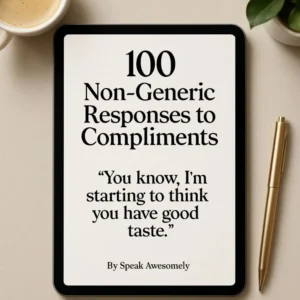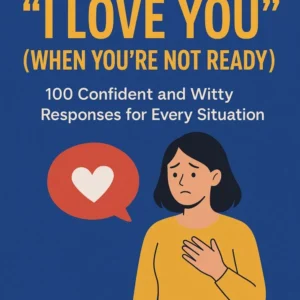Have you ever been caught off guard when someone greets you with “Wie geht es dir?” (How are you?) in German? You pause for a second, unsure whether to give a polite short answer, an honest update, or maybe even a funny reply. I faced this exact situation during my first week living in Vienna. My neighbour asked me, “Na, wie geht’s dir?” and instead of confidently replying, I stumbled through a half-English, half-German response that left us both laughing. That awkward moment taught me something important: knowing how to respond isn’t just about vocabulary—it’s about connecting, sounding natural, and building relationships.
In this article, I’ll share practical, real-world ways to respond to Wie geht es dir, drawing from personal experience, expert advice, and cultural insights. By the end, you’ll know not only what to say, but also when to use each response depending on context—whether you’re chatting with a German classmate, greeting a business colleague, or meeting someone in Austria or Switzerland.
Why Responding Naturally to Wie geht es dir Matters
At first glance, Wie geht es dir? seems like a simple question. But in German-speaking cultures, how you respond communicates much more than just how you’re feeling. A linguistics professor at the University of Freiburg, Dr. Sabine Treutlein, explains:
“Responding to everyday greetings in German is less about literal information and more about showing respect, openness, and a willingness to engage.”
In other words, your reply can set the tone for the entire conversation. Give too short or awkward an answer, and you risk sounding cold. Share too much detail in the wrong setting, and it might overwhelm the other person. Learning flexible ways to respond helps you navigate both casual chats and professional interactions.
Breaking Down the Basics
Before we dive into advanced and nuanced responses, let’s start with the fundamentals.
Standard Replies
These are polite and safe, perfect for beginners:
- Mir geht es gut, danke. – I’m doing well, thank you.
- Gut, und dir? – Good, and you?
- Alles in Ordnung. – Everything’s fine.
When I first began learning German, I stuck with these. They’re reliable and work in almost any situation. But over time, I noticed that native speakers often use more casual, faster responses.
Casual Everyday Responses
In informal settings (friends, classmates, neighbours), you’ll hear shorter, friendlier versions:
- Gut, danke. Und selbst? – Good, thanks. And yourself?
- Nicht schlecht. – Not bad.
- Passt schon. – It’s alright.
When my Austrian friends ask me, “Wie geht’s?”, they often expect these laid-back replies. It feels natural and keeps the conversation light.
Adding Personality to Your Responses
Giving robotic textbook answers might keep you safe, but it won’t help you stand out or sound authentic. Adding a touch of personality shows confidence and creates deeper connections.
Honest but Balanced Responses
Sometimes, being real makes for better conversations:
- Es war ein langer Tag, aber mir geht’s gut. – It’s been a long day, but I’m fine.
- Ehrlich gesagt, ein bisschen müde. – Honestly, a bit tired.
A Berlin-based German teacher I interviewed, Laura Möller, shared:
“Germans value authenticity. It’s okay to say you’re tired or stressed, as long as you don’t unload a full diary of problems in a casual greeting.”
This balance between honesty and brevity is key.
Friendly and Warm Responses
When you want to show positivity or kindness:
- Mir geht’s super, danke der Nachfrage! – I’m great, thanks for asking!
- Ganz gut, und bei dir? – Pretty good, and you?
I often use these with colleagues. It keeps the mood light but still warm.
Regional Flavours: Germany, Austria, and Switzerland
Just like English greetings differ between the UK, US, and Australia, German greetings shift depending on the region.
- Germany: You’ll often hear „Na, wie geht’s?“ (So, how’s it going?)—a very casual opener. Responses can be short: „Gut, danke.“
- Austria: People often say „Wie geht’s dir?“ but may use expressions like „Passt schon“ (It’s alright). Austrians tend to be friendly but also pragmatic.
- Switzerland: Variants like „Wie goht’s?“ appear in Swiss German. If you’re not fluent in Swiss dialect, a simple High German reply like „Mir geht’s gut, danke“ is still polite.
During a visit to Zurich, I found that even if I didn’t fully understand Swiss German greetings, locals appreciated my effort to respond politely in standard German.
Situational Responses: Casual vs. Formal
Context matters. Your reply to a colleague in a professional setting should not sound the same as your response to a close friend.
In Formal Situations (Work, Meetings, Interviews)
- Mir geht es sehr gut, danke. Und Ihnen? – I’m doing very well, thank you. And you? (formal ‘Sie’)
- Danke der Nachfrage, alles bestens. – Thanks for asking, everything’s excellent.
In Informal Situations (Friends, Family, Social Gatherings)
- Ganz okay, bisschen müde. – Pretty okay, a bit tired.
- Super, freue mich aufs Wochenende. – Great, looking forward to the weekend.
A business communication trainer in Munich, Markus Schneider, notes:
“In professional settings, polished and positive responses are safer. In personal circles, being open and relaxed works better.”
Humorous and Playful Responses
Sometimes, humour is the best icebreaker. With friends or close peers, you can keep it light-hearted:
- Mir geht’s wie immer – fantastisch! – I’m as always – fantastic!
- Könnte schlimmer sein! – Could be worse!
- Ich lebe noch. – Still alive.
When I jokingly replied „Ich lebe noch“ to a German friend, it instantly broke the ice and sparked laughter. It showed that language learning doesn’t always have to be stiff.
Cultural Nuances: Reading Between the Lines
Something important to remember: Wie geht es dir? doesn’t always require a detailed response. Sometimes it’s more of a polite formula, similar to “How are you?” in English. But if someone asks with genuine interest, you’ll notice from their tone and eye contact. In that case, a longer, more honest reply is appropriate.
A 2019 study on intercultural communication at the University of Heidelberg highlighted that learners of German often struggle with knowing how much detail to provide. The rule of thumb? Match the energy of the person asking.
Practical Tips to Sound Natural
- Listen first – Notice how locals reply and mirror their style.
- Don’t overthink – Short answers are perfectly fine in casual chats.
- Match formality – Use Sie in formal contexts and du with friends.
- Add follow-up questions – Asking back („Und dir?“) shows genuine interest.
- Use tone and body language – Smile, nod, and show warmth in your delivery.
FAQs
1. Do I always need to ask back „Und dir?“?
Not always, but it’s polite. It keeps the conversation balanced.
2. Is it rude to just say „Gut“?
No, it’s acceptable in casual contexts. But adding a “thank you” or “and you?” makes it warmer.
3. What if I don’t feel good?
It’s fine to say „Nicht so gut“ (Not so well) or „Es geht“ (So-so). Germans appreciate honesty.
4. Can I use humour with strangers?
Be cautious. With close friends it’s great, but in professional or new settings, stick to neutral replies first.
5. Is there a difference between „Wie geht es dir?“ and „Wie geht’s?“?
Yes. „Wie geht’s?“ is more casual and common in everyday use, while „Wie geht es dir?“ is slightly more formal.
Final Thoughts
Responding to Wie geht es dir goes beyond grammar—it’s about building cultural bridges. Whether you give a standard reply like „Mir geht’s gut, danke“, a warm response like „Super, danke der Nachfrage“, or even a playful „Ich lebe noch“, the key is to stay authentic and context-aware. My biggest breakthrough in learning German came when I stopped memorising textbook answers and started experimenting with replies that matched my personality.
So next time someone asks, “Wie geht es dir?”, don’t panic. See it as an opportunity—to practise, to connect, and maybe even to spark a laugh.
Over to you: How do you usually respond when someone asks Wie geht es dir? Do you prefer honest replies, lighthearted ones, or the classic safe answers? Share your favourite response in the comments—I’d love to hear different takes from learners and native speakers alike!
Read About: Socialwick: Does It Live Up to the Hype?
Recommended Products

3,500+ Emoji Meanings Guide (2025 Edition) – Speak Awesomely’s Ultimate Digital Handbook for Every Emoji Explained
Original price was: $ 30.$ 10Current price is: $ 10.Add to Cart
100 Romantic Pick-Up Lines + 20 Bonus 18+ Lines | Modern Dating & Flirting Guide for Confidence, Charm, and Attraction
Original price was: $ 25.$ 10Current price is: $ 10.Add to Cart
100 Witty & Unexpected Responses to Compliments – Speak Awesomely’s Ultimate PDF Guide for Confident, Clever Conversations
Original price was: $ 15.$ 6Current price is: $ 6.Add to Cart
100 Smart & Heart-Savvy Responses to ‘I Love You’ (When You’re Not Ready) – Speak Awesomely’s Essential Communication Guide
Original price was: $ 17.$ 10Current price is: $ 10.Add to Cart




